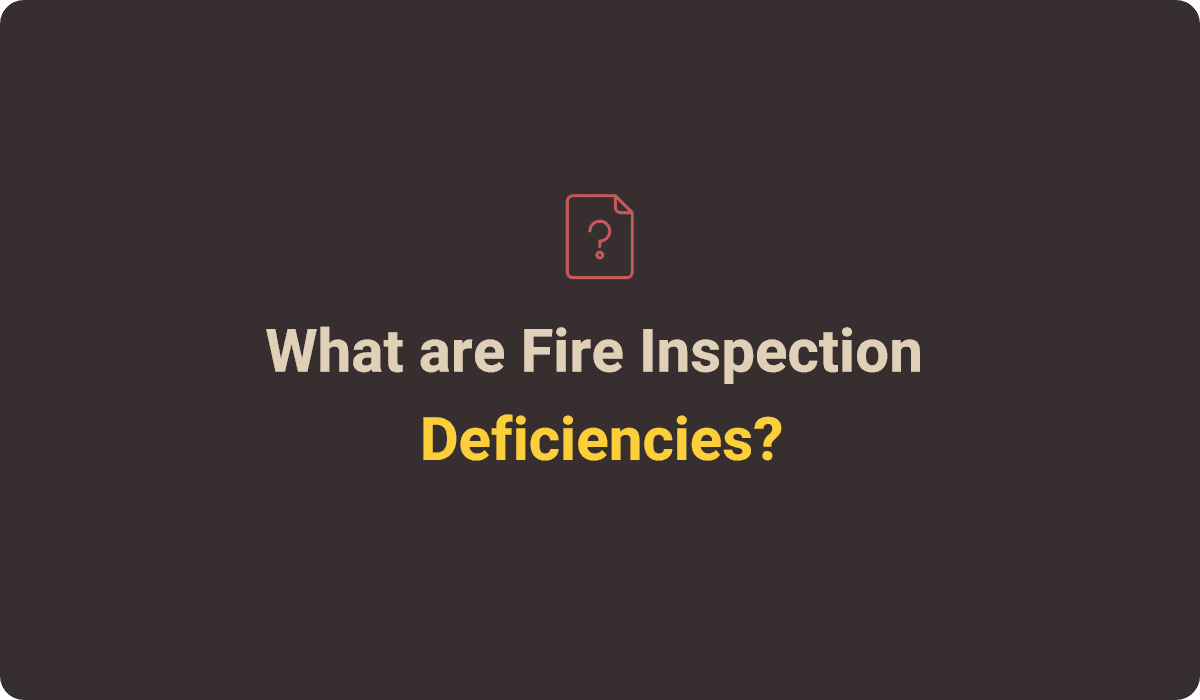
What are Fire Inspection Deficiencies?
Fire inspection deficiencies refer to the temporary damage in the fire system. It would have a deep impact on the performance of the fire system. If it is not repaired, it may lead to huge damage to the building in the future. A fire inspection deficiency can be disastrous during an emergency, especially when a fire occurs. The NFPA and local authorities have detailed rules on the fire inspection deficiencies to ensure that they are handled properly.
Fire inspection deficiencies can be caused by the buildup of dust and other foreign materials such as paint in the fire system. There may be deficiencies in pull stations, smoke detectors, and fire alarm batteries to mention a few. Deficiencies in the pull station occur because of code violations such as obstruction and wrong installation of the equipment. Damage in smoke detectors occurs because of the dust and bugs that clog their chamber. The fire alarm batteries can be deficient if batteries get too low.
Types of Fire Inspection Deficiencies
The NFPA generally categorizes fire inspection deficiencies into two: noncritical and critical. Noncritical deficiencies don’t impact the inspection system much, but it has to be repaired to reduce any consequences in the future. For example, a pipe that is showing some corrosion will still function during a fire, but if the conditions get worse it would damage the system. Examples of noncritical deficiencies in a fire inspection system are fire sprinklers missing, concealed cover plates with deflectors and operating elements in an incorrect position, sprinkler cabinets missing, damaged or loose hangers, and seismic braces and fire alarm devices that are physically damaged.
Critical deficiencies are those that impact an important part of the system. In this condition, the equipment would be severely damaged, but it would work anyway. If it is not repaired, it would lead to huge damage to the system. Examples of a critical fire inspection deficiency are painted sprinklers, inaccessible fire hydrants, leaking and dripping water pipes, fittings with critical mechanical damage, pressure switches not functioning properly, and any internal inspection revealing the presence of rust in fire inspection equipment. These deficiencies can have a material impact on the system’s performance and should be repaired as soon as possible.
Once a fire inspection deficiency is discovered, professionals use color-coded tags to differentiate the types of deficiencies. For example, inspectors may use green tags for the compliant system, yellow for the noncritical, and red tags for critical deficiencies. The best way to prevent the fire is to inspect them routinely and when deficiencies are found it is essential to get each one resolved. The main purpose of a fire inspection is to identify and educate business and property owners about any deficiencies and overall fire safety. The NFPA handbook emphasizes that the studies offered by the organization are meant only to help people understand the fire inspection deficiency, it cannot serve as an instruction for classifying similar problems in the system.


